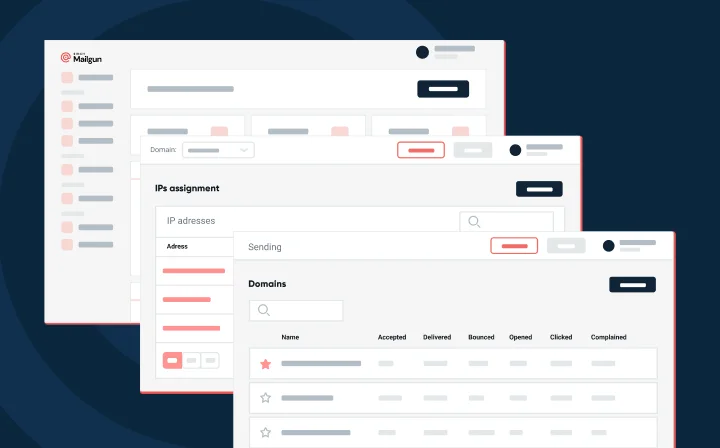Product
Weekly product update: Access Mailgun directly through the Rackspace Cloud Control Panel

Product

You may remember that Mailgun was acquired by Rackspace back in August of last year. So far, we think the acquisition is going great: we’re still developing on the product as much as ever, we love the Rackspace team, and thanks to our awesome customers, we’re growing really fast (more than doubling our email volume since the acquisition). While the majority of our customers still come from other platforms and hosting solutions, a ton of Rackspace customers have started using Mailgun (thanks guys!). To make life easier on these developers, Mailgun is now accessible from directly within the Rackspace Cloud Control Panel.
If you’re a Rackspace customer, you can access your Mailgun account directly from the place where you manage your servers, databases, block storage, private networks and everything else.
By default, each Rackspace Cloud account comes with a fresh Mailgun account, but you can also link your existing Mailgun account. To do that, you’ll just need your API key and use the same login email address for both accounts. Pretty simple.
A while back we blogged about a really cool photo sharing app that used Mailgun to parse emails that users send with their photos and then upload the files to Cloud Files, Rackspace’s object store (which is based on OpenStack Swift). You can read the full post here, but here’s the gist.
After you’ve set up a Route to parse the email and post it to your app, send the attachment off to Cloud Files like so:
import cloudfiles
import uuid
import os
conn = cloudfiles.get_connection(username=hsimpson, api_key='kwyjibo')
images = conn.create_container('images')
#Create a unique ID for a filename
image_attachment = images.create_object('%s%s') % (str(uuid.uuid4()), file_extension)
image_attachment.load_from_filename(attachment.filename)
In this case (because this is a photo sharing app), it’s important that everything inside the images container is publicly reachable with a unique URL. After uploading, you can request the public URI from Cloud Files.
image_attachment.public_uri()
>>'http://c1234.cdn.cloudfiles.rackspacecloud.com/6a8f43...ab3cb7.jpg'
That’s it. Hope the Rackspace integration makes it a little easier to build email into your app like this. Till next time.
Happy sending,
The Mailgunners